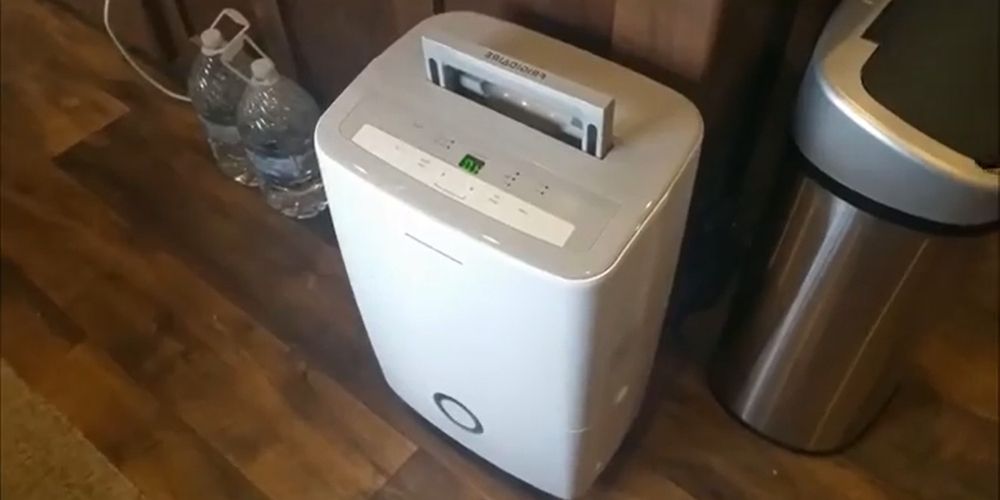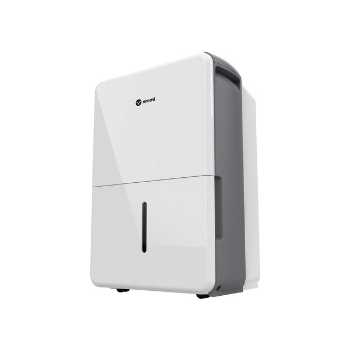How many square feet does a 30 pint dehumidifier cover?
3 Key Takeaways:
🚀 A 30-pint dehumidifier can cover areas up to 1500 square feet, which is usually the size of average residential spaces.
🚀 The humidity level, number of occupants, and ventilation of the space are important factors to consider when determining the right size dehumidifier.
🚀 In very wet conditions, it may be best to consider buying multiple small dehumidifiers and placing them at key locations that experience the most humidity.
Is a 30 pint dehumidifier big enough?
A 30-pint dehumidifier can cover areas up to 1500 feet. This is usually the size of average residential spaces. However, you would need to consider several factors to determine the right size dehumidifier. Below are some things to factor in when choosing the right dehumidifier:
1. The size of the environment and relative humidity
If it’s anywhere between 100- 1500 sq ft, a 30-pint dehumidifier works well. This could mean anything from an office cubicle to a studio apartment. It can also work in garages and laundry rooms.
Humidity levels can be tricky to identify since the answer to this question can be subjective. But think of it on three levels- moderately damp, wet, and very wet. The first one would mean visible condensation on windows and will smell musty. In the second scenario, it would also include a damp room, traces of mildew, and mold.
And finally, being very wet would mean finding still water on the floors or window sills or in the basement. The higher the humidity, the more pints of water you need or a bigger dehumidifier.
2. Number of occupants and ventilation
The number of people using the space in question can also impact the humidity of a space. If the space is well-ventilated with windows and doors that can be opened to circulate airflow, then a small to medium-sized dehumidifier can work well.
However, please note if the space is very wet, has a lot of people living in the space, and limited airflow, then a 30-pint dehumidifier for a 1500-square feet environment may not suffice.
Instead, it would be best to consider buying multiple small dehumidifiers of 10 – 20 pints and placing them at key locations that experience the most humidity, for example, if a particular corner often has a musty smell or has too many layers of cloth or furniture. Another key location could be where steam is frequently generated, like a laundry room, near the bathroom or kitchen.
How to calculate the square footage of the dehumidifier?

The sq ft of an area is usually correlated with the pint capacity of the dehumidifier. This pint capacity refers to a dehumidifier that can remove a room’s moisture level within a 24-hour window.
Ideally, the 70-pint dehumidifier works well as a whole-house dehumidifier or for residential spaces up to 4500 sq ft. In very wet conditions like standing water and damp walls, it can cover only up to 2000 sq ft. A bigger dehumidifier with a pint capacity higher than 70 is designed for commercial use. Our dehumidifier size guide can be of great help.
Which is the best 30-pint dehumidifier according to us?
After reviewing several 30-pint units available in the market today, our verdict is the Vremi 22 pint 1500 sq. ft Energy Star rated dehumidifier.
The Vremi 22-pint dehumidifier comes with an easy-to-clean filter, a removable water tank, and an auto-shut-off function. It also has built-in wheels and handles that make it easy to transport. The quiet fan feature means you can also keep in bedroom spaces without worrying about disturbed sleep.
Another key component of the Vremi 22 is that it can run up to 24 hours continuously when operated under optimum conditions. It works best for a medium to large-sized room with mild to mid-level humidity.
Can you have two dehumidifiers in one room?
Yes, if it is a very large room of over 2000 sq ft or the capacity of the dehumidifiers is below 30 pints. If you have the right-sized dehumidifier, one should suffice per room. But, if your room is large and you already have a 30-pint dehumidifier, you may want to add a second one to cover the area.
FAQ Section
1. How much does a 30 pint dehumidifier cost?
The price of a 30-pint dehumidifier varies for each brand and its features. Dehumidifiers with smart features like digital controls for adjusting temperature and in-built filters cost upwards of $99.
2. How big of a dehumidifier do you need for 500 square feet?
An 18 or 22-pint dehumidifier should suffice for up to 500 sq ft. Pick a large capacity unit if the space gets very wet and the lower one if the air feels only moist.
3. What size dehumidifier do you need for 800 square feet?
Anything between a 22-pint to a 50-pint dehumidifier will work for an 800-square feet area.
4. Do you need two dehumidifiers in the basement?
A single dehumidifier unit is designed for a space that is continuous without partition. If a basement is less than 500 sq ft, then a single 30-pint dehumidifier can work well. However, basements usually contain washing machines and accumulate other things over the years.
Basements are also spaces that trap moisture and encourage mold growth and mildew. So if the basement area tends to get damp, consider a large (30-50 pint) dehumidifier. If the space is relatively empty and open, a single unit will suffice, and this will also reduce your utility bills.
In case it is a large commercial space with multiple washer/dryer units or being used as a storage space and the humidity is high, then you may need to consider getting multiple smaller (12-18 pint) dehumidifiers. They will help control humidity effectively and reduce the possibility of mold and moderately damp walls.
5. What size dehumidifier do you need for a double garage?
The answer to this question depends on the square feet of the garage and a few other factors like the humid climate and airflow. Once you have determined the humidity level in your garage, then it’s about measuring the square footage. It is best to use a dehumidifier sizing chart to be sure.
For a garage that’s less than 500 sq ft, an 18 or 22-pint dehumidifier should suffice. For a garage that’s anywhere between 500-1000 sq ft, a 30-50 pint would be the correct size dehumidifier.
5. How big a dehumidifier do you need for 1200 square feet?
A 30-pint dehumidifier works well for areas up to 1500 sq ft. So, if you have a space that is 1200 sq ft, you would need a 30-pint dehumidifier. It could vary if the humidity level is very high.
5. How many square feet does a 35-pint dehumidifier cover?
A 35-pint dehumidifier can cover an area of 500 square feet. It is close enough to the 30-pint unit but would work even better if the humidity level is high.
Wrapping Up
Whether it’s still water on windows from excess humidity to water on the floor from laundry units, controlling damp environments is key to preventing mold and rot, particularly in basements and garages where electrical equipment is sometimes stored.
It is a good idea to measure the square footage of an area and consider the humidity levels beforehand to avoid overkill by picking the wrong size for your home or office. An oversized dehumidifier that runs inefficiently will not only make a large dent in your utility bills but also create an uncomfortable environment.
For instance, buying a 50-pint dehumidifier instead of an 18-pint for a studio apartment that measures less than 500-square feet can result in very dry air. It also means you will have to spend a lot of time adjusting the setting or switching it off after running it for a short time to keep the dryness in check.
It’s best to observe factors like square footage, humidity levels, the number of people in the living space, and the kind of airflow before researching dehumidifiers. That way, you can easily pick one based on functionality and size at a price point that feels right for you.
Using the right-sized dehumidifier combined with proper floor drain systems can go a long way in removing excess moisture damage. It can also improve air quality at home significantly without breaking the bank.

About The Author
Olivia — a self-confessed air quality addict — is a home climate enthusiast, fresh air advocate, and someone with deep personal experience and knowledge about mold extermination. Her work was mentioned in countless notable humidity publications. Previously she was an editor at Mold Remediation.
